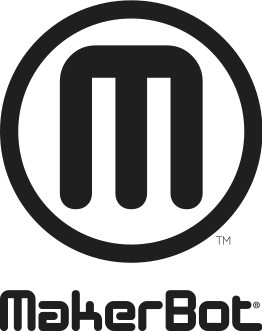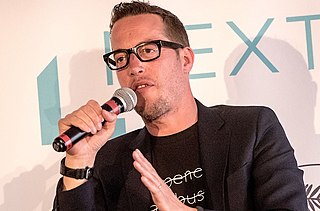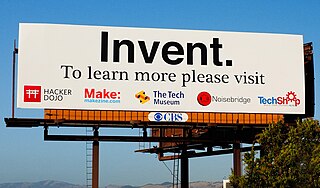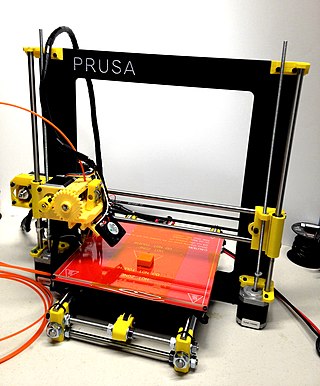S. Scott Crump is the inventor of fused deposition modeling (FDM) and co-founder of Stratasys, Ltd. Crump invented and patented FDM technology in 1989 with his wife and Stratasys co-founder Lisa Crump. He is currently the chairman of the board of directors of Stratasys, which produces additive manufacturing machines for direct digital manufacturing ; these machines are popularly called “3D printers.” He took the manufacturing company public in 1994 (Nasdaq:SSYS). He also runs Fortus, RedEye on Demand, and Dimension Printing – business units of Stratasys.

Stratasys, Ltd. is an American-Israeli manufacturer of 3D printers, software, and materials for polymer additive manufacturing as well as 3D-printed parts on-demand. The company is incorporated in Israel. Engineers use Stratasys systems to model complex geometries in a wide range of polymer materials, including: ABS, polyphenylsulfone (PPSF), polycarbonate (PC) and polyetherimide and Nylon 12.

MakerBot Industries, LLC was an American desktop 3D printer manufacturer company headquartered in New York City. It was founded in January 2009 by Bre Pettis, Adam Mayer, and Zach "Hoeken" Smith to build on the early progress of the RepRap Project. It was acquired by Stratasys in June 2013. As of April 2016, MakerBot had sold over 100,000 desktop 3D printers worldwide. Between 2009 and 2019, the company released 7 generations of 3D printers, ending with the METHOD and METHOD X. It was at one point the leader of the desktop market with an important presence in the media, but its market share declined over the late 2010s. MakerBot also founded and operated Thingiverse, the largest online 3D printing community and file repository. In August 2022, the company completed a merger with its long-time competitor Ultimaker. The combined company is known as UltiMaker, but retains the MakerBot name for its Sketch line of education-focused 3D printers.

Martin Warner is a British technology entrepreneur, and film producer. He is best known as the chief executive officer and founder of botObjects, Flix Premiere and Autonomous Flight.

The maker culture is a contemporary subculture representing a technology-based extension of DIY culture that intersects with hardware-oriented parts of hacker culture and revels in the creation of new devices as well as tinkering with existing ones. The maker culture in general supports open-source hardware. Typical interests enjoyed by the maker culture include engineering-oriented pursuits such as electronics, robotics, 3-D printing, and the use of computer numeric control tools, as well as more traditional activities such as metalworking, woodworking, and, mainly, its predecessor, traditional arts and crafts.

Thingiverse is a website dedicated to the sharing of user-created digital design files. Providing primarily free, open-source hardware designs licensed under the GNU General Public License or Creative Commons licenses, the site allows contributors to select a user license type for the designs that they share. 3D printers, laser cutters, milling machines and many other technologies can be used to physically create the files shared by the users on Thingiverse.

500 Global is an early-stage venture fund and seed accelerator founded in 2010 by Dave McClure and Christine Tsai. The fund admitted a first "class" of twelve startups to its incubator office in Mountain View, California in February 2011. They expanded to a second class of 21 in June 2011 and a third class of 34 in October 2011.

Fab@Home is a multi-material 3D printer, launched in 2006. It was one of the first two open-source DIY 3D printers in the world, at a time when all other additive manufacturing machines were still proprietary. The Fab@Home and the RepRap are credited with sparking the consumer 3D Printing revolution.

GrabCAD, Inc. is a Cambridge, Massachusetts-based startup that created a free cloud-based collaboration environment that helps engineering teams manage, view and share CAD files.
MatterHackers is an Orange County-based company founded in 2012 that supplies and sells 3D printing materials and tools. MatterHackers is developing their 3D printer control software, MatterControl.
A recyclebot is an open-source hardware device for converting waste plastic into filament for open-source 3D printers like the RepRap. Making DIY 3D printer filament at home is both less costly and better for the environment than purchasing conventional 3D printer filament. In following the RepRap tradition there are recyclebot designs that use mostly 3-D printable parts.

Print the Legend is a 2014 documentary film and Netflix original focused on 3D printing. It delves into the growth of the 3D printing industry, with focus on startup companies MakerBot and Formlabs, established companies Stratasys, PrintForm and 3D Systems, and figures of controversy in the industry such as Cody Wilson.

Fused filament fabrication (FFF), also known as fused deposition modeling, or filament freeform fabrication, is a 3D printing process that uses a continuous filament of a thermoplastic material. Filament is fed from a large spool through a moving, heated printer extruder head, and is deposited on the growing work. The print head is moved under computer control to define the printed shape. Usually the head moves in two dimensions to deposit one horizontal plane, or layer, at a time; the work or the print head is then moved vertically by a small amount to begin a new layer. The speed of the extruder head may also be controlled to stop and start deposition and form an interrupted plane without stringing or dribbling between sections. "Fused filament fabrication" was coined by the members of the RepRap project to give an acronym (FFF) that would be legally unconstrained in its use.
Cambrian Genomics was a biotechnology company based in San Francisco which used a laser-based technique to synthesize DNA. Cambrian Genomics produced genetic material for a 2013 effort to produce genetically modified glowing plants for sale to the public. A Kickstarter campaign raised $500,000 for the Glowing Plant project.
Jennifer Lawton is an American businesswoman and applied mathematician. She is COO of Techstars, a startup accelerator.
Desktop Metal is a public American technology company that designs and markets 3D printing systems. Headquartered in Burlington, Massachusetts, the company has raised $438 million in venture funding since its founding from investors such as Google Ventures, BMW, and Ford Motor Company. Desktop Metal launched its first two products in April 2017: the Studio System, a metal 3D printing system catered to engineers and small production runs, and the Production System, intended for manufacturers and large-scale printing. In November 2019, the company launched two new printer systems: the Shop System for machine shops, and the Fiber industrial-grade composites printer for automated fiber placement. The World Economic Forum named Desktop Metal a Technology Pioneer in 2017. In May 2023, Stratasys agreed to acquire Desktop Metal.
Markforged is an American public additive manufacturing company that designs, develops, and manufactures The Digital Forge — an industrial platform of 3D printers, software and materials that enables manufacturers to print parts at the point-of-need. The company is headquartered in Waltham, Massachusetts, in the Greater Boston Area. Markforged was founded by Gregory Mark and the chief technology officer (CTO) David Benhaim in 2013. It produced the first 3D printers capable of printing continuous carbon fiber reinforcement and utilizes a cloud architecture.

Massivit 3D Printing Technologies Ltd. (Massivit3D) is an Israeli public company traded on the Tel Aviv Stock Exchange (TASE:MSVT) Its headquarters are in Lod. The company develops, constructs and sells Additive Manufacturing printers for production of large parts and develops printing materials for use in their printers.











